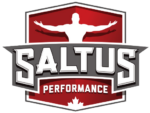BY KEVIN VALCKE – CLINICAL PHYSIOTHERAPIST
INTRODUCTION
When the words “physiotherapy” or “rehabilitation” get muttered around a strength gym, it traditionally hasn’t been words of praise. Often times, it is riddled with criticism and mockery. As a young physiotherapist, I can certainly see why. Decades of disconnect between the two professions has seemed to leave a sizeable gap between the rehabilitation and performance worlds. On one side of the equation, there is a therapy and rehab focus of “light exercise, 3 sets of 10” that just hasn’t seemed to die-off. On the other side sits a “lift heavy, who cares about form”, party. Ask around either side of the spectrum and this is the general consensus of the other. What if I told you that this paradigm is changing, that there is hope for a reconciled relationship?
THE CHANGE
Over the past few years, I have seen a marvelous change in both sides of the industry. Are there still old-school beliefs on either side that fail to change? Absolutely. I believe this will soon change for the better, and with it, dinky 3×10 exercise prescription for all, and an “ass-to-grass” by any-means necessary approach.
More frequently, physiotherapists and rehabilitation professionals are utilizing better periodization parameters, more global strengthening exercises, heavier resistance, and more explosive and athletic movements. The rehabilitation process doesn’t end when one has simply decreased symptoms; it is designed to take an athlete further than their expected outcomes. We are utilizing more researched and understood parameters/exercise selection, which allows for a far more seamless transition into performance training. Rehabilitation is now performed on-field or on-court as the goal is to make an athlete better, stronger, and faster than before injury, rather than back to a “functional level”. Research is dictating a shift away from lying down on a table for 30 minutes and getting things “fixed” or “mobilized”. Less sitting and getting pampered like you’re at a spa and more time utilizing targeted exercises to achieve goals. I am seeing increased use of barbells, kettlebells, med-balls, and boxes in a rehab setting. Physiotherapy clinics are now established in/around strength gyms with professionals who dabble with both sides of the coin. This is the way that professional sporting organizations have operated for some time now, and it’s why we see athletes setting records a year after tearing an ACL, rather than returning to a just a competent level. You’re seeing a more specialized medical community who can analyze a sport, break down its needs/movements, understand where an athlete may be lacking, and keep focus on these aspects throughout the injury process. More common are the specialists who actually understand athlete’s goals and psyche, and above all else, who aren’t ashamed to ask for help from other professions.
Knowledge transfer and a more open-minded approach have led to skills, drills, and research to be shared and utilized far more easily. Strength coaches and rehabilitation professionals now demand equal parts quality and quantity of movement. This has been accomplished from a more shared approach with technique, corrective exercises, and overall better training. The fitness industry has undergone a transition from “bro science” to conducting and better understanding strength and conditioning research. There now exists a beautiful two-way street of information and suggestions that exists between the medical and performance communities. Coaches now have a tremendous understanding of anatomy and injury mechanisms to derive a more safe and effective exercise regime, and rehab professionals have increased knowledge on how to properly load and progress an athlete.
CONCLUSION
In conclusion, the way in which we rehabilitate and train athletes is changing – it’s evolving for the better of the athlete. It is including more practical and fun exercise, more focus on education and ensuring a smooth transition to performance. I believe that you’ll continue to see more facilities that integrate both worlds. Along with athlete specializing in sport earlier, I believe that there will be further specialization in the medical and fitness industries with increased expertise in specific sports to better serve those athletes.
